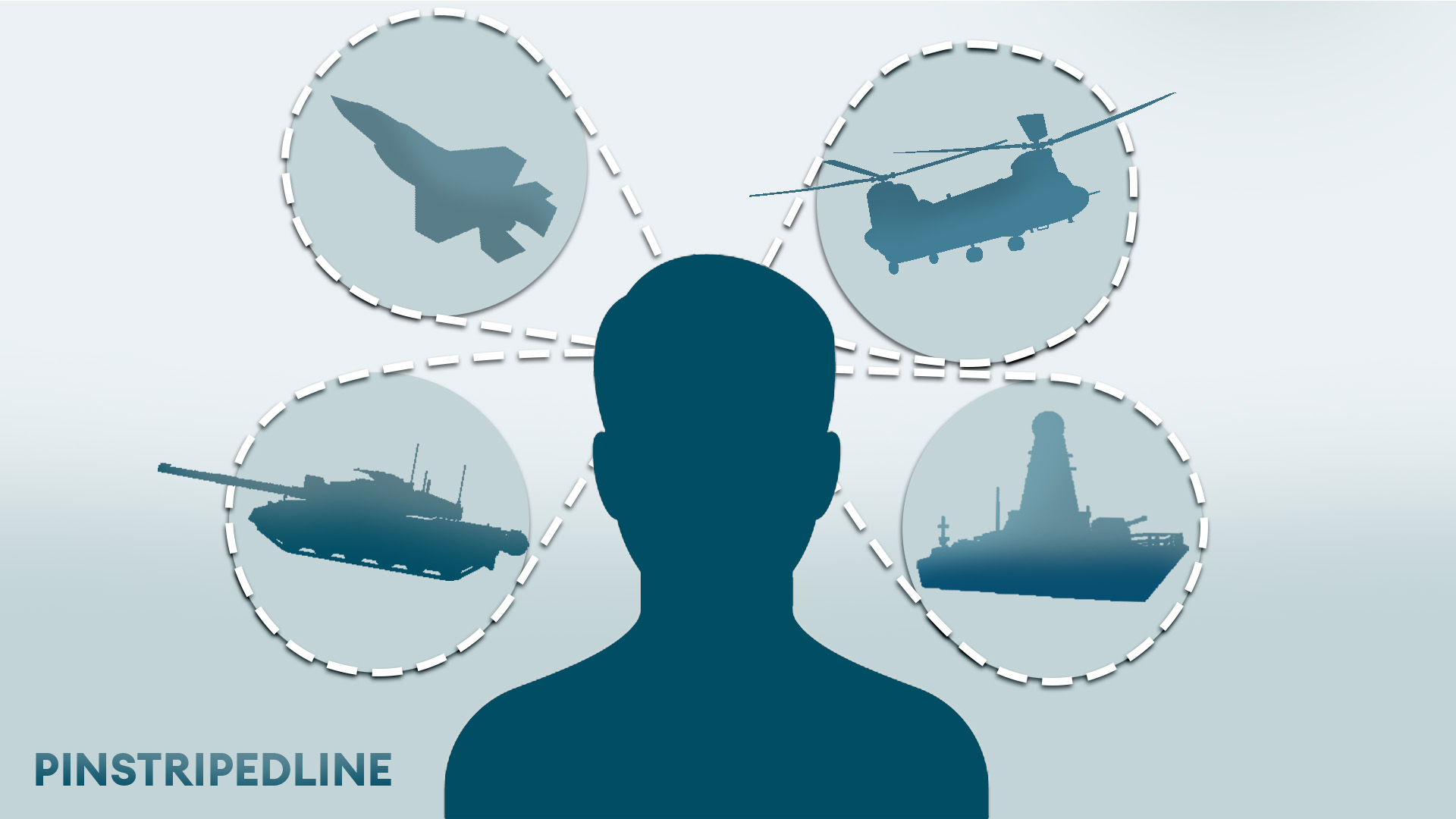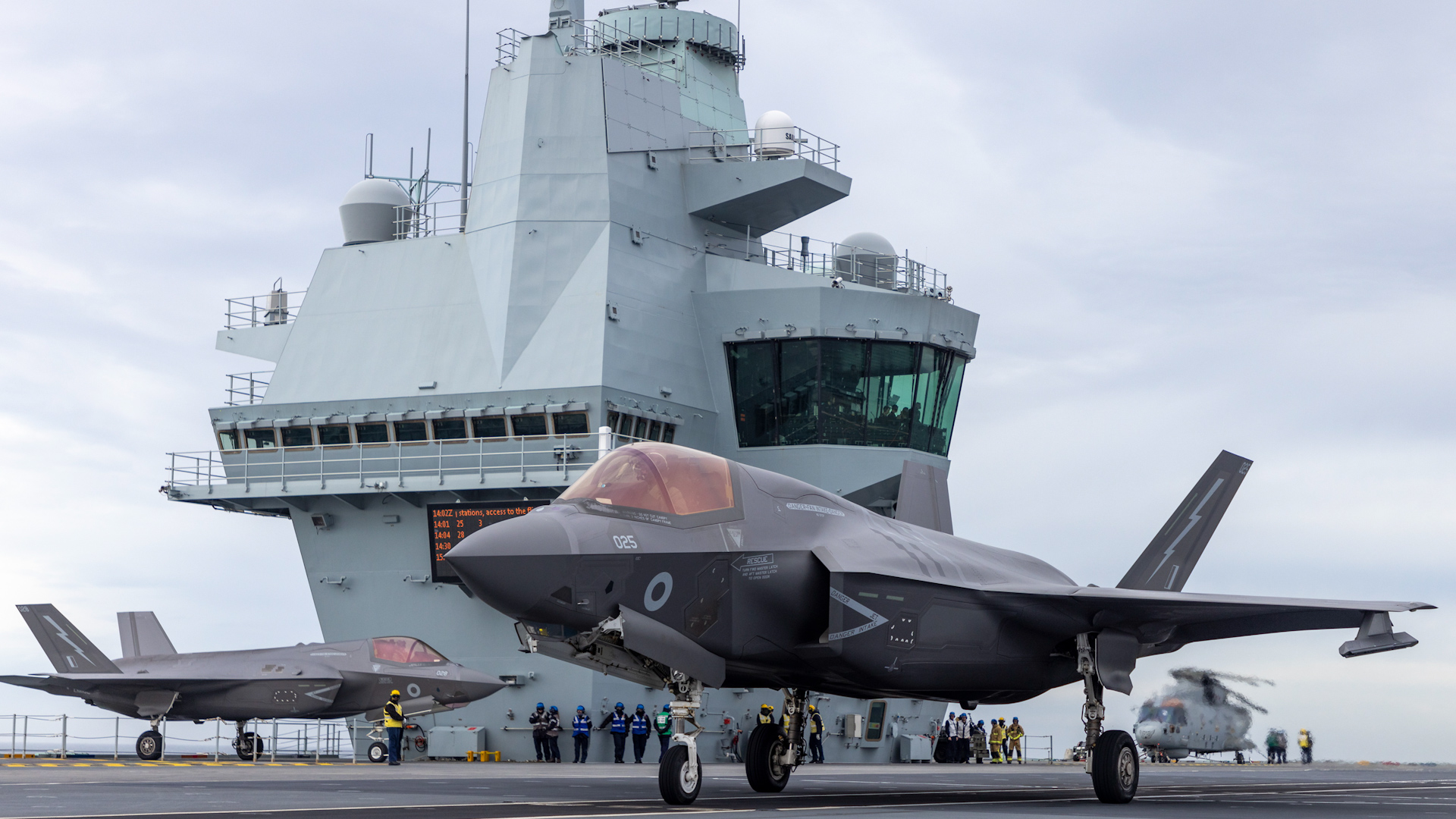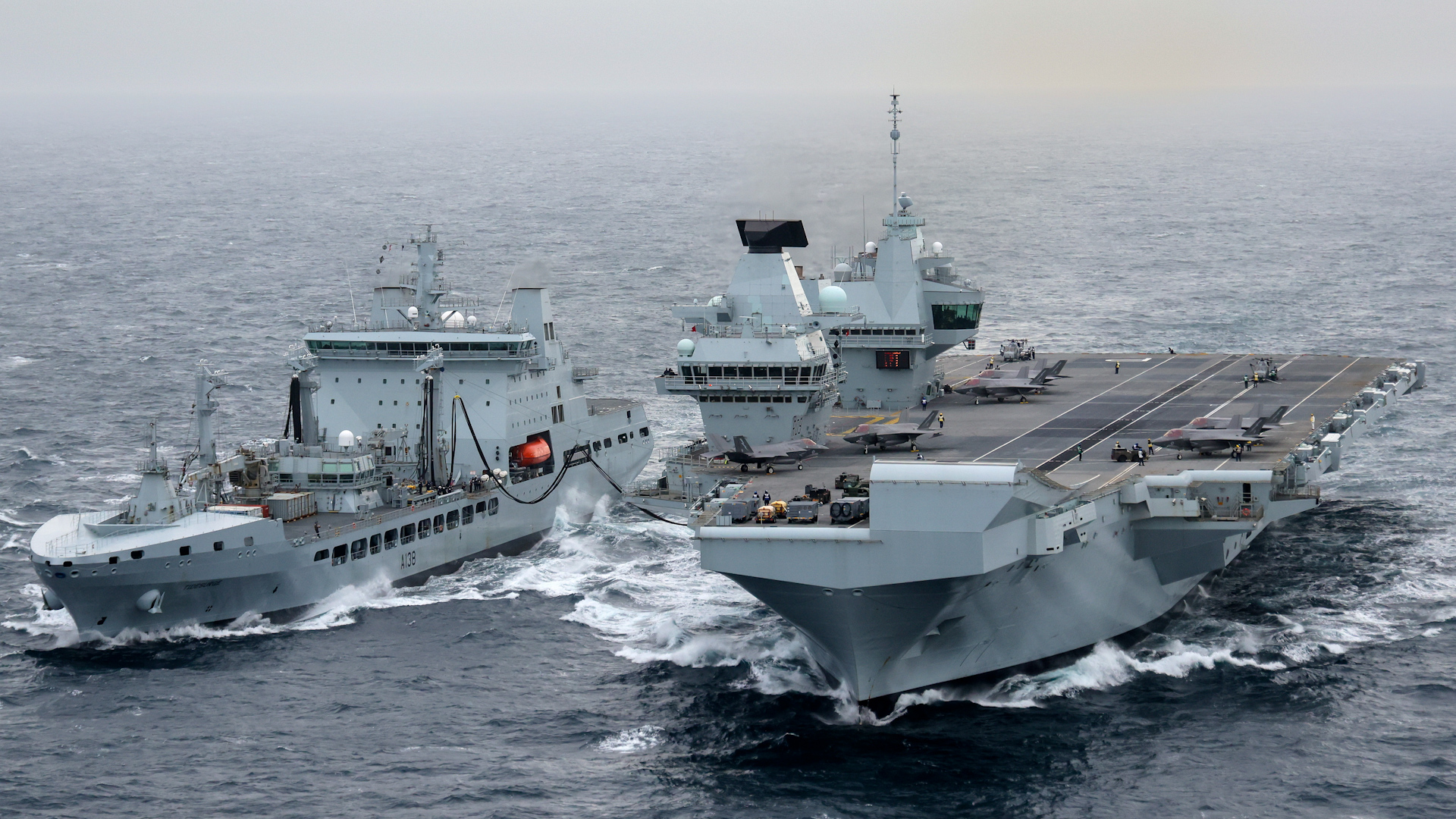
Deploying HMS Prince of Wales on Steadfast Defender sends clear signal of UK's lofty Nato ambitions

Defence and security blogger @Pinstripedline explains why the deployment of HMS Prince of Wales on Exercise Steadfast Defender sends a strong signal for Nato.
The Royal Navy has deployed the aircraft carrier HMS Prince of Wales on a short-notice mission to participate in the major Nato exercise Steadfast Defender.
This is one of the biggest Nato exercises to be held in decades and involves tens of thousands of troops, dozens of aircraft and ships working across the North Atlantic to test how the alliance would reinforce and defend itself in the event of being attacked.
Originally HMS Queen Elizabeth was due to participate, but due to mechanical issues had to be withdrawn at very short notice.
Instead, HMS Prince of Wales, which was at 30 days' notice for sea and preparing for a major maintenance period, was made ready to deploy and sailed just eight days later.
This is a very significant accomplishment and is testament to both the flexibility of Royal Navy personnel and the value gained from having two carriers available for operations.
At the time of the announcement there had been speculation in the press that HMS Queen Elizabeth would not participate in the exercise, but instead deploy to the Red Sea to support ongoing UK-US air strikes against Houthi rebels.
That the MOD has chosen to not change the plans, and is continuing to prioritise exercise participation, to the extent of ensuring that a carrier is available at any cost, speaks to the importance of Steadfast Defender to the UK.
But why is it so important to do this?
During the Cold War, Nato regularly practised exercises that involved testing the reinforcement of Germany and Norway by troops being sent over from the US and Canada.
The US Army prepositioned huge numbers of vehicles in the UK and, in the event of war, would have sailed tens of thousands of troops, equipment, and supplies across the Atlantic, arriving in the UK and then moving on to Germany to reinforce the existing forces based there.
The role of Nato navies, including the Royal Navy, was to provide sufficient protection for these convoys against Soviet air, naval and submarine attacks to ensure they got there safely.
At the same time, the Royal Marines and other Nato units would have deployed to Norway using amphibious forces to help protect against Soviet invasion, buying time for more reinforcements to arrive from the US.
Many of these exercises became less relevant after 1991, and although Nato continued to conduct exercises in the Arctic, it was harder to generate a sense of threat.
With the resurgence of Russia as a credible military opponent in recent years, Nato now has little difficulty in seeing the need for holding these exercises.
The purpose of Steadfast Defender is to test the reinforcement of Europe from the USA with ground troops, then the onward ability to rapidly reinforce troops already deployed in Nato member states – particularly the Baltic republics and Scandinavian nations.
Other phases will focus on ground and air operations and carry on over several months, with several major exercises being conducted under the overall banner of Steadfast Defender.
For the UK, this exercise matters for several reasons. Firstly, at a strategic level, there is growing interest in how the UK can operate in the High North (above the Arctic Circle) and the security strategy for the region.
The region presents several security challenges including competition for natural resources, climate change opening new shipping lanes that are ice-free throughout the year, changing how global shipping works, as well as increased exploitation of the seabed for resources.
The recent expansion of Nato membership by seeing Finland and, hopefully shortly, Sweden too, join the alliance has significantly increased the amount of Arctic terrain that may need defending in war.

Unlike during the Cold War, where Norway, which shares a short border with Russia, was seen as the most likely target for invasion, Nato now has a significantly larger land border with Russia to defend. This means exercises in the Arctic winter are vital to build allied capabilities to operate in extreme weather conditions, including the equipment, knowledge and skills needed to survive and fight in below-freezing weather.
In addition to these major security trends, there is a clear conventional military threat from Russia in the High North region.
This includes the highly capable Russian nuclear attack submarine fleet, based in Murmansk, which would pose a direct threat to any reinforcement convoys in wartime, as well as the security of Nato SSBNs (ballistic missile submarines) if it is able to get its nuclear attack submarines to sea without being monitored.
More widely, the Russians operate a considerable number of specialist submarines and 'research ships' reportedly used for clandestine intelligence operations that could tap undersea cables.
Apart from the naval vessels, there are also long-range strategic nuclear bombers, like the Tu-160 Blackjack and patrol aircraft like the Tu-95 Bear, which operate across the North Atlantic and require careful monitoring by Nato air forces when in the region to prevent possible collisions.
Strategically the UK sees participation in exercises like Nordic Response as vital for its national security goals, helping deliver success for its High North strategy and diplomatically by visibly showcasing the British and wider Nato commitment to the defence of Scandinavia.
More widely, it helps reaffirm the importance of British leadership of the Joint Expeditionary Force (JEF), which is the high readiness rapid response force that the UK and 11 other mostly northern European Nato members contribute to.

Operationally, the deployment of a Carrier Strike Group (CSG) is a vital way of testing how the UK's military assets can work with allies in a range of ways.
Embarking the F-35 airwing helps test the ability to provide both strike and air cover for the task group while operating with several allied ships from partner nations, testing the ability to work as part of an international strike group.
The CSG concept is designed to involve international partners and integrate foreign ships as fully as possible into the defence of the force – this was last tested in the CSG21 deployment, when US and Dutch warships joined the group, while CSG25, also heading to the Far East, will have allied ships participate.
Conducting exercises like Nordic Response will test the ability of the UK to lead highly capable international task groups to launch air strikes, carry out ASW (anti-submarine warfare) missions using Merlin helicopters and in turn provide integrated air and sea defence against possible threats.
Add to this wider training of operations in the littoral (for example, the deployment of P2000 patrol craft to operate north of the Arctic Circle as raiding vessels) and the return of Royal Marines to conduct Arctic warfare training in Norway, and the UK is sending a very clear signal of its ongoing commitment and leadership to the High North Nato partners.
The decision to deploy the carrier to Nato and not to go 'East of Suez' for operations in the Red Sea now also demonstrates a level of political astuteness on the part of the Royal Navy.
There will be a General Election in the UK within the next 12 months, and in turn there will be the next regularly scheduled five-yearly defence review in 2025.
In previous defence reviews the flexibility of the carrier force and its ability to project power globally has been a key sales pitch for the Navy, keen to make the case for how it contributes to 'Global Britain'.
Now, with Nato assuming an increased level of importance in British defence planning, using the Carrier Strike Group on Exercise Steadfast Defender is a good opportunity to show how it is an invaluable tool for UK influence in Nato.
Offering a balanced capability of embarking Nato command staff (as previously done by HMS Prince of Wales in 2022), a diverse range of aviation from F-35B fighters to most Nato helicopters, command and control facilities and the ability to co-ordinate operations for an international task group, the aircraft carrier is the ideal platform for the UK to exercise leadership in the alliance.
The Royal Navy is likely to make a great deal of its ability to provide, at relatively low cost and future investment, a suite of capabilities that will enable British leadership in Nato.
This would represent in some ways a return to the 1950s and 60s, when the Royal Navy assigned several carrier groups to undertake strike missions in the High North in wartime.
It is this flexibility of the Carrier Strike concept that makes it so powerful, able to deliver meaningfully against very different visions of British national security goals, from global operations to leading major Nato exercises, the carrier plays a critical role at the centre of British defence planning.
It's for this reason that prioritising sending HMS Prince of Wales on the exercise was so important because it helps visibly showcase British leadership commitments to Nato and wider strategic goals, helps build stronger operational relationships with allies and, more widely, helps make the case for the use of carriers in what may become a far more Nato-centred British defence policy after the 2025 Defence Review.
@Pinstripedline writes anonymously from the heart of the security world. Follow his blog at https://thinpinstripedline.blogspot.com/









